The same method was used to produce an easter egg for a website I haven't finished or put online yet. Said site resides on a server running MS-DOS / JNOS 1.11a, the easter egg has the server stream video to the viewer and writes a cookie to their hard drive (containing the song lyrics. Fitting as they state "In the morning we will part, and you won't forget me!" which they won't, not for 24 hours or so until the cookie is erased anyway. Here's the hi-res version of the video, the server has to use a 13MB version which is lower quality due to the available bandwidth being shit. If the browser doesn't support HTML5 the site falls back on GIF/WAV which doesn't sync, but means I can legitimately claim the whole site works in Internet Explorer 4.
The same method is also regularly used in my cartoon to speed up 3D backdrop drawing. I still draw by hand, but render shots of Build to image sequences to use as a basic wire frame or to mark an object's movement with backdrops which are hard to trace on with the light pad.
And lastly, I've talked about this before, but I am honestly very proud of it. I give you what, to my knowledge, is the single largest "machine" ever constructed in vanilla Duke 3D... The 24 hour digital clock;
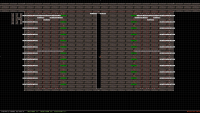
Broken into segments, this is one of the larger ones and controls the hours. The timing has to be precise, driven from a 13-tick "bellows" hanging off of the side of this area. Due to the way the game timing works, the clock loses accuracy, being off by two minutes every 24 hours. Lezing's clock in Last Pissed Time is only a 1 hour clock which doesn't roll over and uses a single incremental raised sector. My clock face, however, is also a work of insane patience and sanity testing...
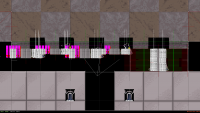
One of the clock faces in the level. If the timing slips, this actually feeds back into the "clock circuitry" and breaks the mechanism. This also has desirable effects though, as every stage of the clock means certain tags are active. The very same mechanism used to trigger each part of the clock can be used to make AND / OR / XOR etc possible and the clock can be used to control almost any effect. It could also be expanded to show days, weeks, months, even years and decades up until you run out of walls/sprites in the engine.
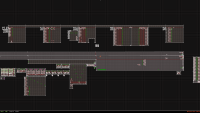
The entire clock with surrounding machines. I don't remember what all of them do exactly... On the left is the "wave machine" which controls the ocean waves. Below the clock is an area which I think controls the 4 story elevator and the locator-less subway. The rest are controlling puzzles, the 'electricity supply' and things like that. One of them, using those 45-degree blocking walls near the targets utilizes mirrors so that shooters offset to the target still hit it because the shrinker shot bounces off of the mirror, I think this is one of the random combination puzzles - the switch combination is randomized and it uses a machine similar to the clock face to give the player some of the code. It never uses the 4th position of the multiswitches the puzzle is made from as it may self-trigger if the code ever reaches 4-4-4-4 and it seemed easier and fairer to the player if none of them were allowed to be 4, even though only one would have to be moved. Of course the mechanism stops working and locks the code when the player gets to a certain point in the level.
With careful timing and planning, almost any effect is possible. This and Nitro use randomizers. The whole premise of Nitro relies on an AND mechanism to check which 'items' the player has as well as a carefully timed one to check if the player is running or walking.
The original clock mechanism was beautiful to look at as it did not use bellows, instead not using seconds and relying on bouncing the shrinker shot over a set distance, equal to 60 seconds of travel, to operate the clock. Of course, as the mirrors moved it lost time and was scrapped early on for the more accurate, more resource heavy mechanism present today. The simpler mechanism was actually heavier and killed frame rate thanks to mirrors seeing one another and rotating to "reject" bout 11 shooters every minute, meaning a lot of sprites were bouncing around doing nothing and causing problems. You can download Quantum Physics, the map using the clock, and look at these devices for yourself. Keep in mind that the map uses some tricks whereby it lies about what sector an object is in, so saving the map might break it, best to use a copy you haven't had open in Mapster if you want to play it. On the other hand, if you want to actually be in game mode while going inside the mechanisms to see them working, I recommend disabling your sound as the noise of the shooters hitting closed gates is overwhelming.
I devised a mechanism to make the clock more accurate which involved the last position turning off the "bellows" and waiting for a shot to cover a certain distance (two seconds worth) before turning them back on. I never implemented it because who actually sits in a map for 24 hours. Even I just increased the tics-per-second in the game to see what happened and who knows if the in-game timer in the level stats display is even that accurate really, for all I know my clock might be more accurate than that but I never thought to test the game timer that way. If you want to do it, be my guest, but you may as well watch paint dry.
Ha, every time I look at this stuff all I can hear is this.
Edit: This keyboard is fucked, sorry if there are any spelling/grammar issues in this post.

 Help
Help
 Duke4.net
Duke4.net DNF #1
DNF #1 Duke 3D #1
Duke 3D #1







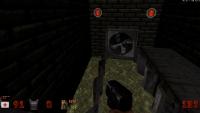
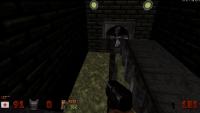

 <--This
<--This 









